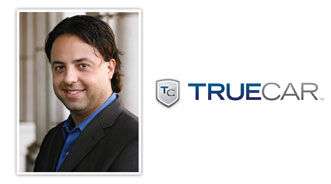TrueCar: First-Half Transaction Prices Hit All-Time High

By subscribing, you agree to receive communications from Auto Remarketing and our partners in accordance with our Privacy Policy. We may share your information with select partners and sponsors who may contact you about their products and services. You may unsubscribe at any time.
SANTA MONICA, Calif. –
In the first two quarters of 2011, dealers fetched higher prices for the new vehicles on their lots than they had in any other six-month span, according to TrueCar’s 2011 first-half analysis.
The opening six months of the year were dominated by trends such as this one that arose out of the devastating earthquake in Japan.
The fallout from the quake permeated throughout the auto industry and beyond. All-time high transaction prices were just one of many tentacles of the trickle-down effects spawned in the aftermath.
Specifically, average transaction prices came in at $29,482, a gain of 0.7 percent from the same period of 2010, TrueCar said.
“Transaction prices rose to the highest ever during a six-month period as incentives decreased and a lack of inventory in specific vehicles due to the Japanese earthquake,” noted Jesse Toprak, TrueCar’s vice president of industry trends and analytics.
Toyota (up 7.6 percent) experienced the most dramatic gain, followed by Honda (up 5.5 percent) and Kia (up 4.9 percent). General Motors (down 6.2 percent) showed the largest decline, and Nissan (down 2.6 percent) and Ford (down 1.1 percent) were the other two decliners.
Subscribe to Auto Remarketing to stay informed and stay ahead.
By subscribing, you agree to receive communications from Auto Remarketing and our partners in accordance with our Privacy Policy. We may share your information with select partners and sponsors who may contact you about their products and services. You may unsubscribe at any time.
Chrysler’s prices were relatively steady (up 0.2 percent) and Hyundai climbed 3.3 percent.
TrueCar went on to share several other trends it found during the first half, many of which were influenced by the quake and the subsequent production and supply impacts.
First-Half Sales
Overall new-vehicle sales during the first half increased 12.7 percent year-over-year, reaching 6.32 million units. TrueCar’s initial estimate for full-year 2011 sales was 12.8 million vehicles.
“The first half of the year was promising until the earthquake in Japan impacted sales of new cars to the Japanese automakers as supply was constrained,” Toprak stated.
The bulk of car companies boosted their sales by double-digits year-over-year, TrueCar noted. However, four Japanese automakers were outliers to the steep growth: Honda climbed just 2.3 percent; Mazda was up 5.8 percent; and Subaru’s sales improved 4.8 percent. Toyota’s sales were down 4 percent.
Conversely, sales for the Big 3 and Korean automakers skyrocketed.
Hyundai’s sales were up 26.2 percent and Kia showed a 44.1-percent gain, with Chrysler topping the chart for largest gain among the domestics (up 20.4 percent). GM was up 17.1 percent and Ford moved ahead 12.2 percent.
Breaking it down by segment, subcompacts showed the most growth from a year ago (up 39 percent), as their sales came in at 239,278 units during the first half.
Small SUVs — which were up 31.8 percent at 377,473 sales — and sports cars — up 29.4 percent at 218,789 sales — also showed significant growth.
All nine segments examined by TrueCar showed gains, but the increases in some of the larger segments were below the overall industry hike of 12.7 percent.
For instance, large truck sales increased 10.8 percent at 688,989 units, and large SUVs were up 9.8 percent at 239,168 sales.
“Large SUV and truck sales were lower than the industry average during the first half of the year as high gas prices impacted what consumers purchased from January through June,” Toprak shared.
Additionally, midsize car sales increased 9.2 percent to 1.075 million, while large car sales were relatively static (up 0.7 percent) at 289,937 sales.
First-Half Incentives
Another area impacted by the earthquake was incentive levels. Specifically, average incentives for the first half dropped 9.4 percent to $2,432, TrueCar calculated.
“With supply problems during the first half, automakers were able to tighten the amount of incentives they put on the hood of vehicles, leading to stronger profit margins for the manufacturers,” Toprak explained.
Honda was the only one of the major OEMs to spend more on incentives during the first half of the year compared to the same period of 2010, as its spending rose 0.9 percent to $1,996 per unit sold.
Conversely, Kia trimmed the most off its incentives (down 40.9 percent), followed by Hyundai (down 32.1 percent) and Nissan (down 23.5 percent).
In the Big 3, Chrysler’s incentive spending dropped 16.1 percent, and Ford’s fell 13.8 percent. There was a 4.9-percent slide in average incentives for GM.
Toyota’s incentive spending dipped 4.7 percent.
What’s in Store for 3Q & 4Q?
Looking ahead, TrueCar also offered its forecast for the second half of the year.
For starters, it believes sales will pick up modestly and come in at 6.5 million vehicles. Among various automakers, the Korean brands are likely to remain on the upswing but not to the same dramatic degree.
Also, spurred by sales of its Jetta and Passat models as well as the to-be-launched new Beetle, TrueCar projects further gains for Volkswagen.
Segment-wise, in light of seasonal trends and gas prices easing, TrueCar believes large truck and SUV sales will rise.
Meanwhile, there is likely to be an approximate 5-percent hike in incentives, analysts forecast. TrueCar predicts spending will average roughly $2,550 per unit.
Looking at some other trends, TrueCar is forecasting looser financing during the third and fourth quarters, which it believes will let more subprime buyers join the fray. TrueCar is also predicting a 25-percent lease penetration rate by the year’s final quarter.
And as for how the Japanese brands will fare in the second half, TrueCar had this to say: “Japanese manufacturers will reclaim some lost market share in the second half of the year, especially Toyota with the launch of the new Toyota Camry and Toyota Prius V but inventory levels for Japanese manufacturers will not return to normal until late in the year.”
TrueCar also provided the following tables to better illustrate its findings:






